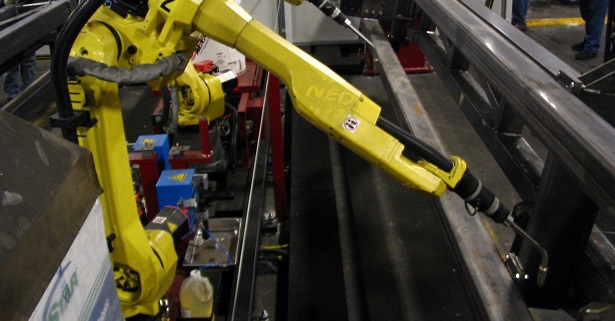Increase in the demand for VGR among various industries is projected to raise the deployment of vision guided robotics software market
The global vision guided robotics software market accounted for US$ 1,148.9 Mn in 2018 and is expected to grow at a CAGR of 15.4% over the forecast period 2019–2027, to account for US$ 4,094.1 Mn in 2027. Automobile manufacturers are actively focusing on the integration of vision-equipped robotic systems to safeguard the correct placement of vehicle closures such as hoods, windshields, doors and trunk lids. The robots are installed across the production line to pick up and place everything accurately to install car parts from roof panels to windshields as well as load them onto the car body’s framework. The vision system made it easy for the system designers to deploy car accurately and precisely.
With the advancement in technology, the industries are also concentrating on the deployment of automation to ease their work. In the last two decades, the company is inclined to integrate 2D vision technology in robotics systems across several industries globally. To meet the boosting requirement of the customers the industries are focusing on advanced imaging technology to make the work more easy and simple. Recently the robotic system is incorporated with 3D vision technology which provides more features as compared to 2D vision technology. The introduction of machine vision software into 3D vision-guided technology robots is expected to increase the skills of the automated system during random bin picking, packaging heavy materials and assembling different parts of machinery among others. The new capabilities of 3D vision-guided robots are they can detect the overall orientation of an object which permits the end user to make an intelligent and real-time decision associated with the automation system depending upon the input of available visual data. The investments involved in the installation of vision-guided robots is comparatively much higher than that of conventional robots across various industries. In the current automation market scenario, the developed countries have matured considerably over the years with the growing number of skilled and knowledgeable operators. However, the developing countries such as Mexico, Germany, India, Saudi Arabia, and African countries among others lag attributing to the lack of technically skilled operators. The lack of knowledge of integrating software or increase the capabilities of robots among the industries in these regions, is compelling the end users of robotic solutions to rely on the manufacturers.
The well-established companies across the globe are deploying robots in their workstations and factories to increase the operational efficiency. A significant growth in adoption of robots by small and medium enterprises (SMEs) has been witnessed in the past few years. With the advent of robust robotic technology, the customization of products for specific applications increased the flexibility of work among small and medium enterprises. The vision guided robots are more accessible and much more flexible when put to work, and these machines are highly reliable from the safety point of view, which allows the company to increase their productivity and ultimately competitiveness in the market. These benefits of vision guided robotic technologies are increasing the investment in robotic systems from small and medium enterprises (SMEs) in the developed countries as well as developing countries across the globe. Other benefits of vision guided robotic technology include working alongside a human, highly mobile, and can perform different tasks every day. In addition, the robot manufacturing companies are lowering the price of the products, thus increasing the adoption rate.
Furthermore, several initiatives to propel the vision guided robotics software market has undertaken by varied players. For instance, Energid Technologies announced a strategic partnership with Perceptron a provider of 3D automated metrology solutions and coordinate measuring machines. According to the partnership, Perceptron would utilize Energid’s Actin software for the development of in-line and near-line robotic inspection systems for the automotive industry.



